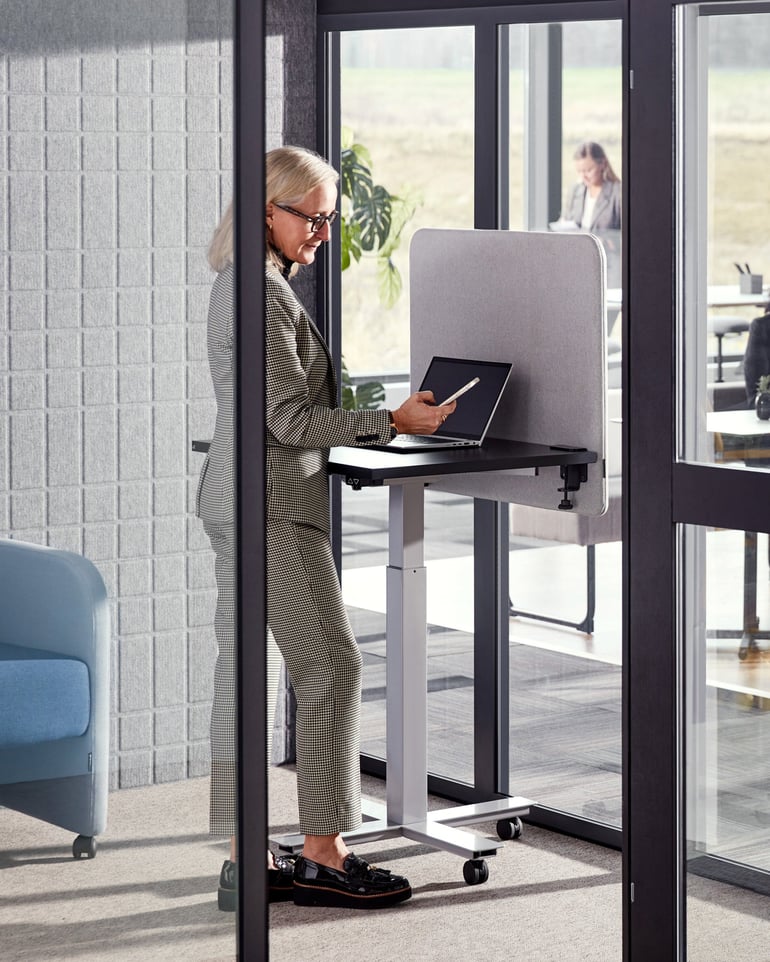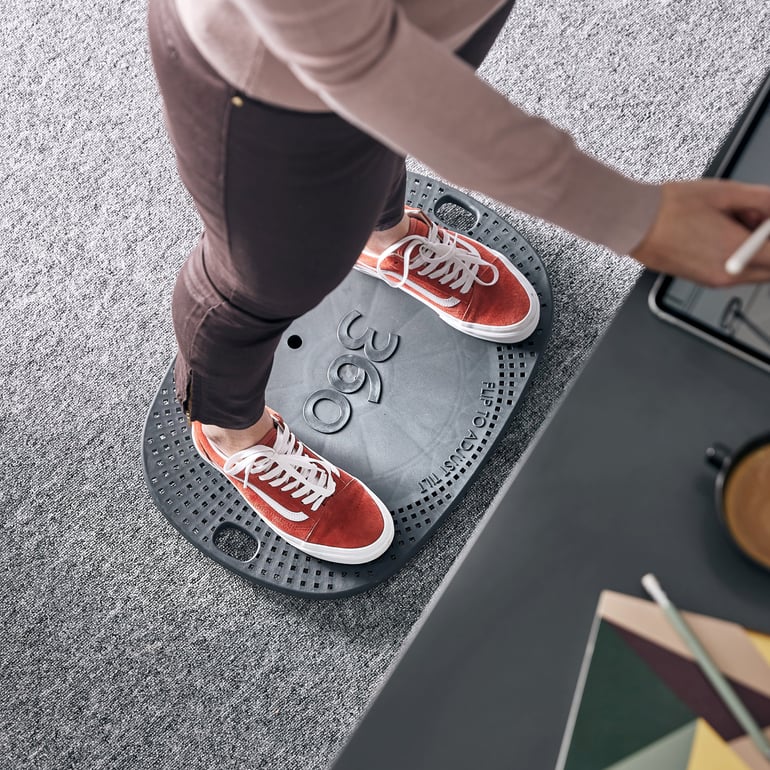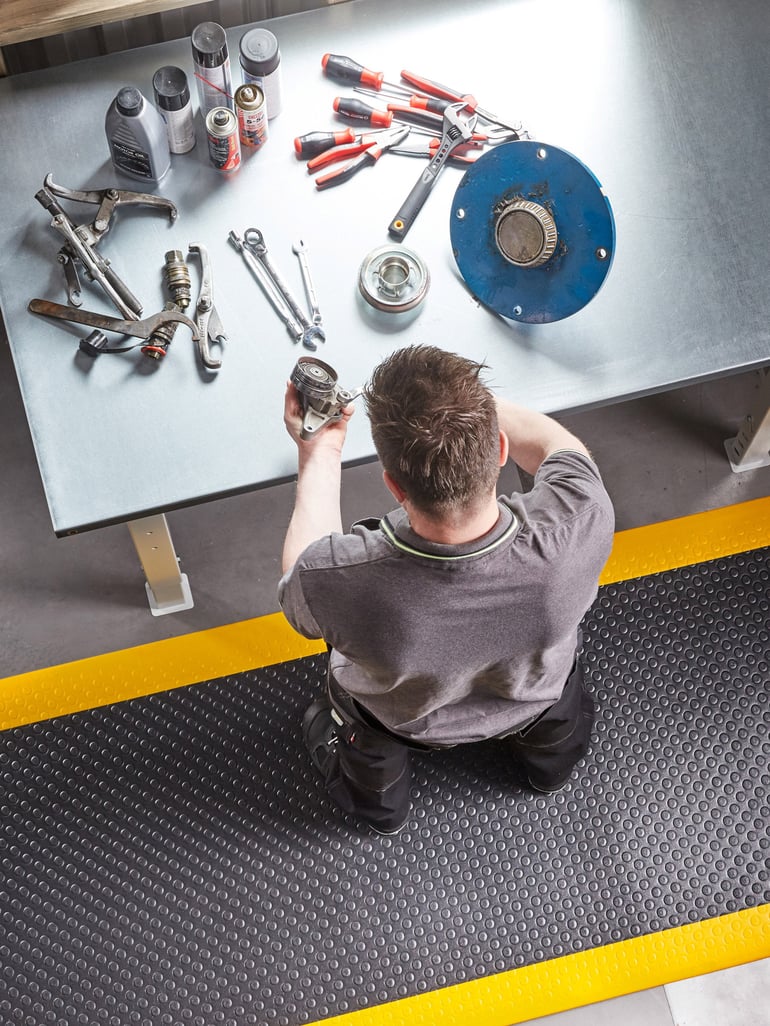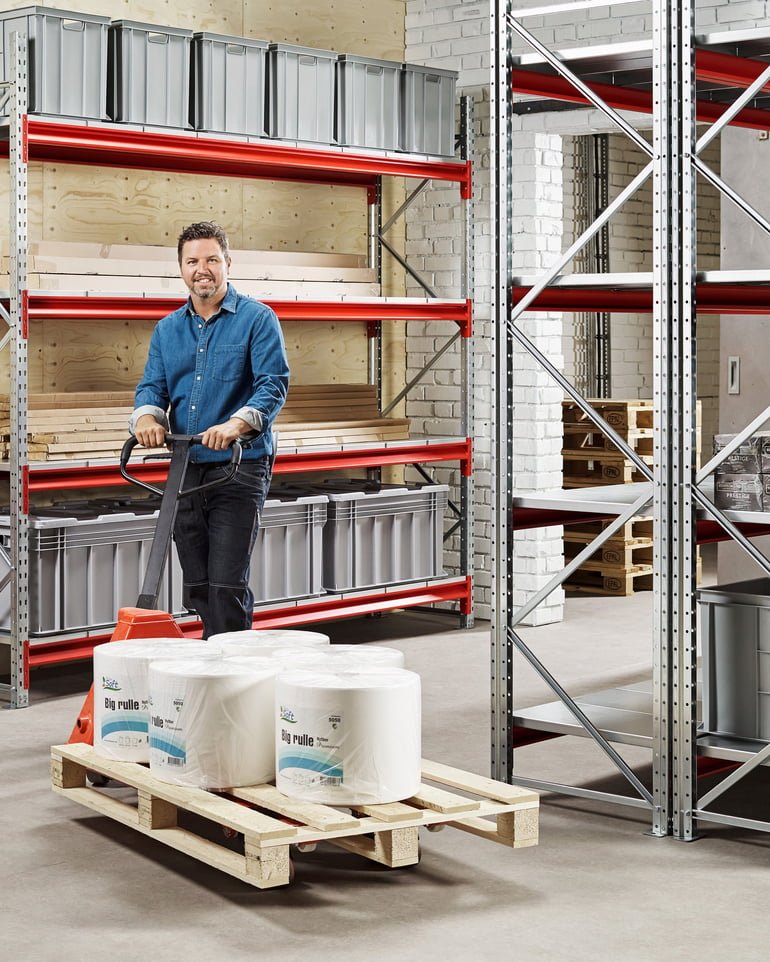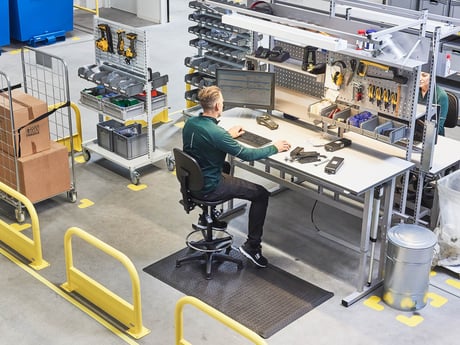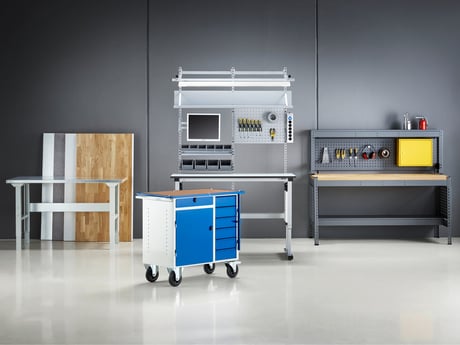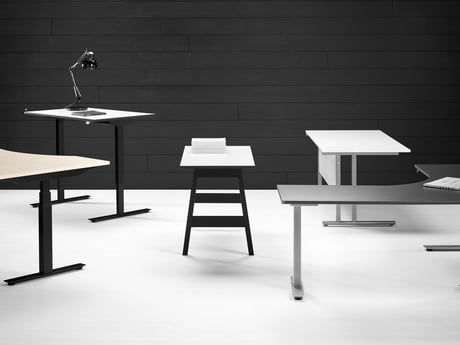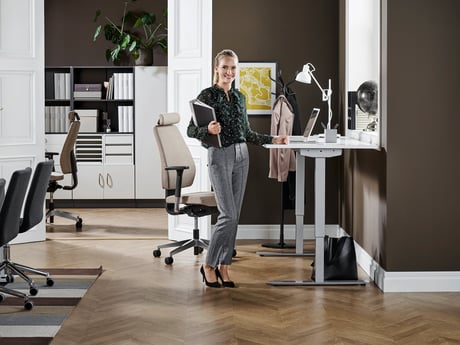- AJ Products IE
- Blog
- Ergonomics in the workplace
- The dangers of prolonged sitting and how to stay active at work
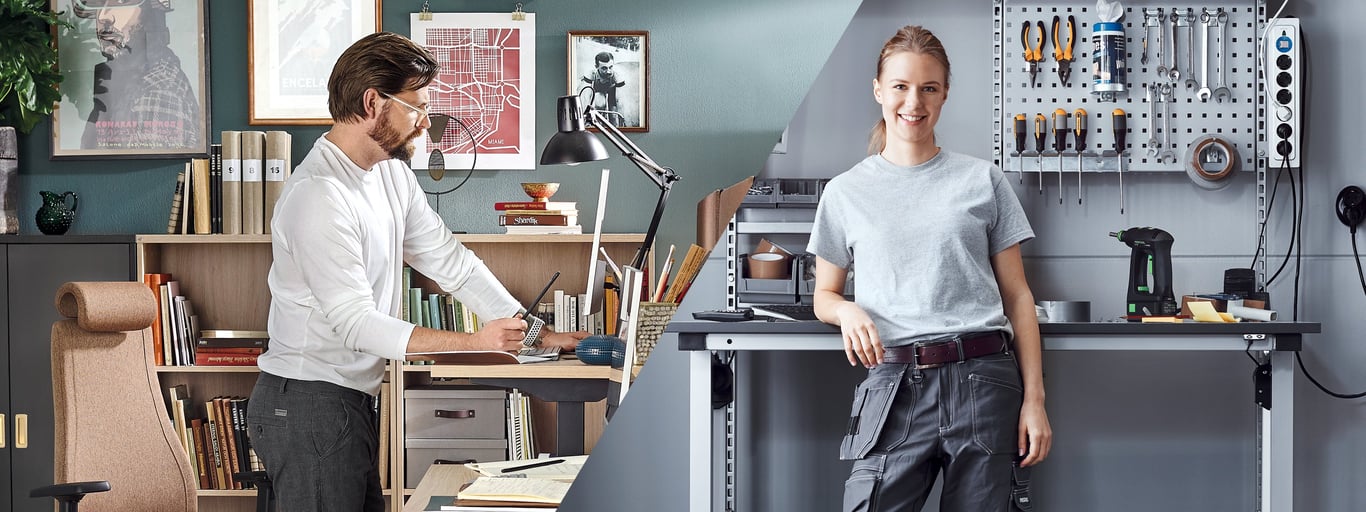
Why you should avoid sitting still
Sitting still for hours at a time increases the risk of health problems such as obesity, diabetes, high blood pressure, cardiovascular disease and cancer. By moving your body regularly you improve oxygenation, which produces the substances that clean the blood stream of blood fats and blood sugars. Staying active at work and during breaks is good for both your mental and physical health. Increasing your physical activity will make you happier and give you more energy to do the things you need to do.
Change up your position
When you have been sitting down for a while you will probably start feeling your muscles stiffen. This is because the muscles tense up. When this happens, standing up is an obvious solution, but standing for long periods of time can actually be just as harmful. The ideal solution is to avoid working in the same position for too long and find ways to add more movement into your day. The smallest things could make a big difference, such as switching between work tasks, drinking a lot of water and taking regular breaks in order to increase energy levels and boost oxygen to the muscles and brain.How to reduce sedentary behavior at work?
Sitting for long periods of time can increase your risk of developing chronic diseases. To reduce your sedentary behavior at work, try these tips:- Use a standing desk or alternate between sitting and standing throughout the day.
- Take the stairs instead of the elevator or escalator.
- Park further away from your workplace and walk the rest of the way.
- Get off public transportation a stop early and walk the rest of the way.
- Have walking meetings.
- Use the restroom that is further away.
- Use active seating, such as a balance ball or kneeling chair.
- Stand up and move around every 20-30 minutes.
- Do simple stretches and exercises while standing.
- Have a cup of coffee or tea standing up.
Introducing the desk treadmill: a revolution in the way we work
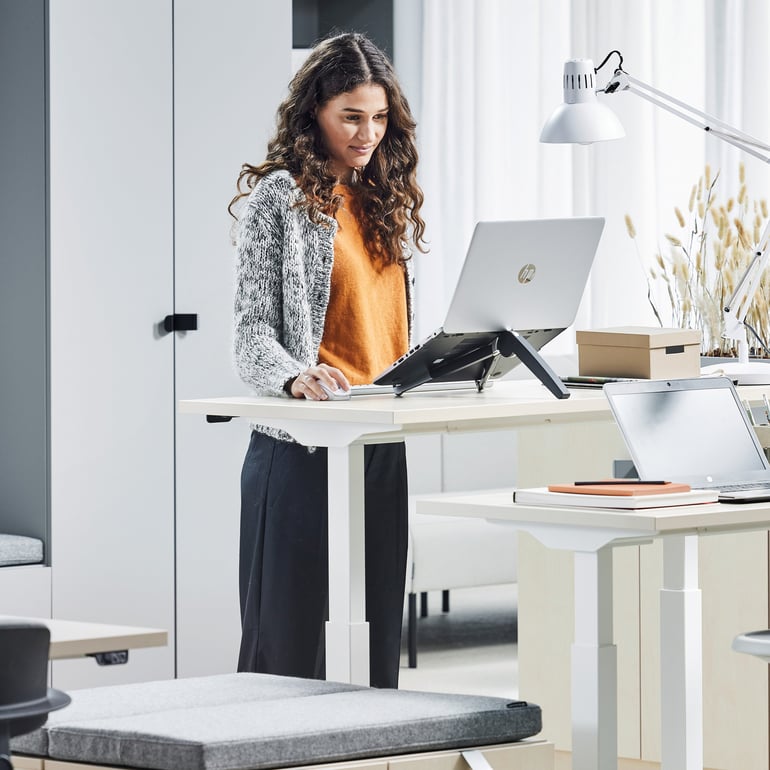
Small changes make a difference
A simple way to get started could be to purchase a height-adjustable workbench or sit-stand desk and an anti-fatigue mat to use at work. All physical activity counts and adapting your workspace can help you take the first step.Physically demanding work
If your work involves heavy lifting, it's important to exercise to help you stay in shape so that your body is used to the demands you place on it. It also might be a good idea to warm up prior to starting work!We often hurt our backs when lifting heavy objects incorrectly, which can cause permanent damage. Make sure to stretch your hips, back and shoulders to prevent this. Tailor the exercise to you, your body and the work tasks you will need to perform.
Read about how to lift correctly
Medicine for the soul
Studies suggest that a sedentary lifestyle can increase the risk of premature death. Ulf Ekelund, professor at the Norwegian University of Sport Sciences and one of the world’s leading experts on physical activity, says that 30 minutes of exercise a day reduces the mortality risk and that a full hour of exercise removes the risk completely.He also says that no matter how long you exercise for, simply doing it has a better effect than not doing it at all.
Movement also supports your mental wellbeing by increasing the level of natural substances in the blood, such as serotonin, noradrenaline and dopamine. These substances help counteract stress and depression, among other things. Being active also has positive effects on the brain and the memory.
FAQ
- Prolonged sitting can have a number of negative health consequences, including:
- Weight gain and obesity
- Type 2 diabetes
- Heart disease and stroke
- Cancer
- Fatigue and sluggishness
- Cognitive decline
- There are many ways to stay active at work, even if you have a desk job. Here are a few tips:
- Get up and move around every 20-30 minutes.
- Use a standing desk or alternate between sitting and standing throughout the day.
- Take breaks to walk, stretch, or do some light exercises.
- Vary your sitting positions. For example, try sitting on a stability ball or in a different type of chair.
- Avoid sitting in the same position for too long.
- Height-adjustable workstations allow you to vary your sitting and standing throughout the day, which can help to improve your blood circulation, reduce blood fats, burn more fat, and improve your ability to consume oxygen.
- Anti-fatigue mats can help to reduce fatigue and discomfort when standing for long periods of time.
- To prevent back injuries during physically demanding work, it is important to exercise regularly and use proper lifting techniques.
Regular exercise can help to strengthen your back muscles and improve your flexibility. Aim for at least 30 minutes of moderate-intensity exercise most days of the week.
Proper lifting techniques include:
- Bending your knees and keeping your back straight.
- Using your legs to lift the object, not your back.
- Keeping the object close to your body.
- Avoiding twisting your back while lifting.
- Asking for help if the object is too heavy.
- Taking breaks often.
- Exercise is good for both your physical and mental health. It can help to:
- Reduce the risk of premature death
- Improve cardiovascular health
- Reduce the risk of chronic diseases such as heart disease, stroke, type 2 diabetes, and cancer
- Strengthen muscles and bones
- Improve mental health and mood
- Increase energy levels
- Reduce stress and anxiety
- Improve sleep quality
- Here are some tips for transitioning to a standing desk:
- Start by standing for 20-30 minutes at a time, and gradually increase the amount of time you spend standing each day.
- Alternate between sitting and standing throughout the day.
- Wear comfortable shoes.
- Take breaks to walk around and stretch.
- If you experience any discomfort, stop standing and sit down.
Get the latest product launches and offers sent direct to your inbox
Do you want to receive exclusive offers, information about new products and inspiration on how you can improve your workplace? Sign up for our free newsletter and be the first to receive our best offers.Please wait...
*By clicking subscribe, I confirm that I have read the privacy policy.
